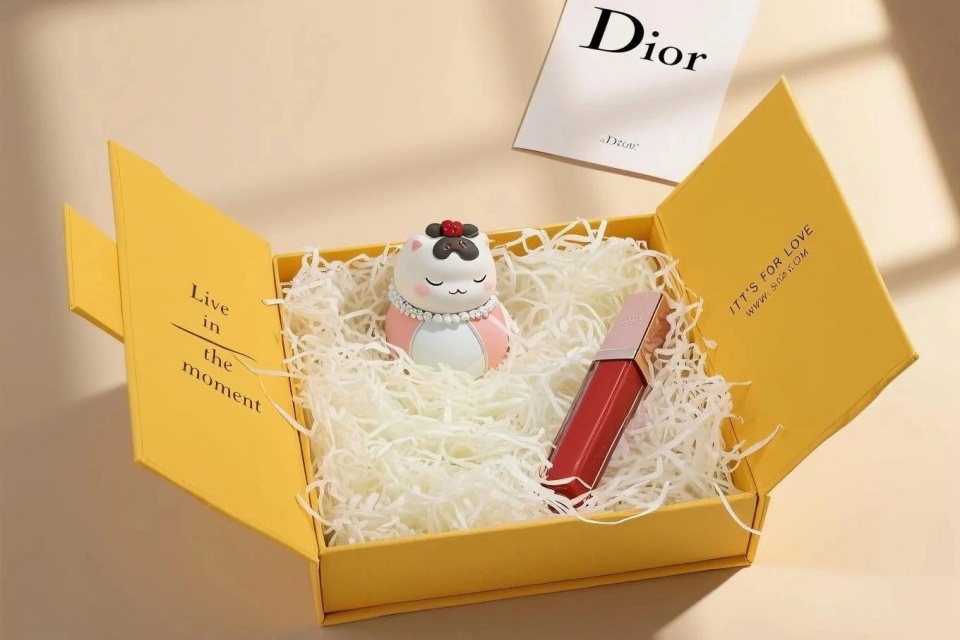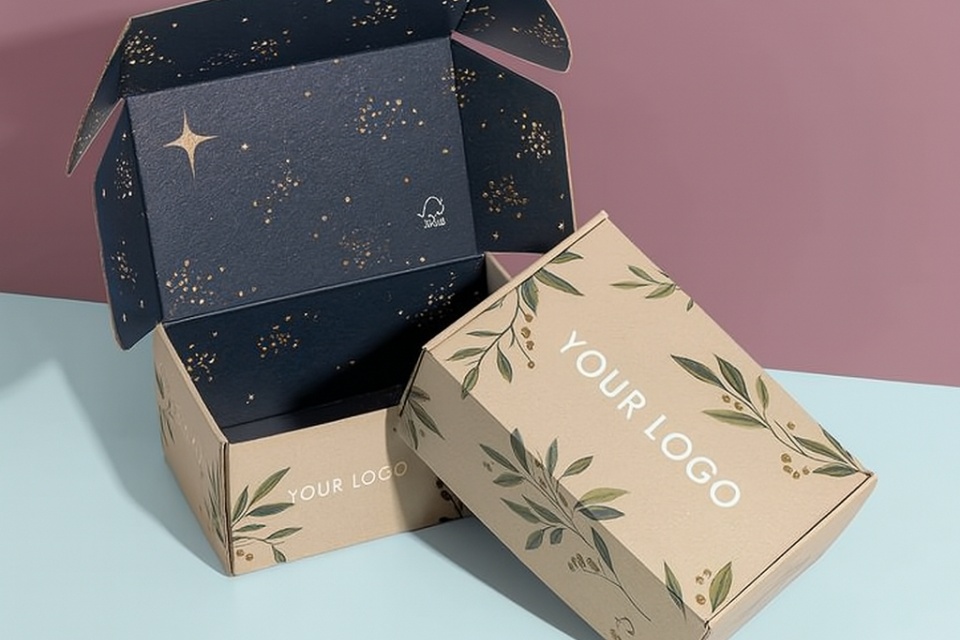Lastest News
Sustainable Beauty Packaging Solutions
Sustainable Beauty Packaging Solutions
Summary
Sustainable beauty packaging solutions refer to innovative packaging designs and materials used in the cosmetics industry that aim to minimize environmental impact while meeting consumer demands. With rising concerns over plastic waste and environmental degradation, sustainable packaging has become a notable trend in the beauty sector, prompting brands to adopt eco-friendly practices. The shift towards sustainability is not only a response to consumer preferences but also a necessity as regulations tighten and the industry faces increasing pressure to reduce its carbon footprint and waste production.
The primary types of sustainable beauty packaging include glass, refillable options, biodegradable materials, and minimalist designs. Glass packaging is favored for its recyclability and durability, although it poses higher transportation costs due to weight. Refillable packaging systems allow consumers to reduce waste by refilling containers, while biodegradable materials offer an eco-friendly alternative to traditional plastics. Minimalist packaging emphasizes simplicity and reduced material usage, appealing to both environmentally conscious consumers and aesthetic sensibilities. Additionally, innovative materials such as plant-based plastics and water-soluble packaging are emerging as viable alternatives to conventional options, demonstrating the beauty industry's commitment to sustainability.
Despite the positive trends, challenges remain in the adoption of sustainable packaging solutions. Economic barriers, consumer confusion about what constitutes sustainable options, and regulatory inconsistencies can hinder progress. Moreover, effective supply chain coordination is essential for implementing sustainable practices, as brands must collaborate with suppliers and recycling systems to ensure efficiency and effectiveness. The balance between cost, consumer expectations, and the pace of innovation remains a critical point of contention as brands navigate the evolving landscape of sustainable beauty packaging.
The move towards sustainable beauty packaging is not only beneficial for the environment but also enhances brand image and consumer loyalty. With a significant portion of consumers prioritizing eco-friendly options, brands that invest in sustainable practices are likely to see increased sales and customer engagement. This transformative shift reflects a broader trend within the industry, as stakeholders recognize the importance of aligning with sustainability goals to meet both regulatory demands and consumer expectations in an increasingly eco-conscious marketplace.
Types of Sustainable Beauty Packaging
Sustainable beauty packaging encompasses a variety of materials and designs aimed at minimizing environmental impact while meeting consumer needs. This section outlines the primary types of sustainable packaging solutions currently employed in the beauty industry.
Glass Packaging
Glass is a popular choice for sustainable cosmetic packaging due to its 100% recyclability and ability to be reused indefinitely without quality loss. This feature significantly reduces the demand for new raw materials. However, glass packaging is heavier than plastic, which can increase transportation emissions and costs. Common applications for glass include nail care products and face serums, which are often packaged in dropper and pump bottles.
Pros and Cons of Glass Packaging
Pros:
- Inert and non-reactive
- Reusable and recyclable
- Transparent and stylish
- Easily customizable
Cons:
- Fragile and prone to breakage
- Initially energy-intensive to produce
- Increased transportation costs due to weight
Refillable Packaging
Refillable packaging has gained traction as a way to combat single-use plastics in the beauty industry. This innovative approach allows consumers to purchase a container once and refill it multiple times, which can substantially reduce packaging waste. Refill systems often utilize lightweight cartridges or pods, appealing to cost-conscious consumers seeking long-term solutions.
Biodegradable Packaging
Biodegradable packaging materials are designed to decompose naturally when exposed to environmental conditions, such as moisture and air. This type of packaging can be found in various products, including deodorants and hair care containers, and offers a more eco-friendly alternative to traditional plastics, which can persist in the environment for hundreds of years.
Considerations for Biodegradable Packaging
While biodegradable packaging helps to reduce landfill waste, it is important to note that not all biodegradable materials are created equal. Some require specific conditions to break down effectively, and others may leave harmful residues.
Minimalist Packaging
Minimalist packaging emphasizes simplicity and the reduction of excess materials. By opting for straightforward designs that eliminate unnecessary components, brands can minimize their environmental footprint while also appealing to consumers through aesthetic value. This approach can also involve the use of repurposed packaging, allowing for creative reuse once the product is consumed.
Innovative and Alternative Materials
The beauty industry is increasingly exploring unconventional materials for sustainable packaging.
- Plant-based Plastics: Made from renewable resources like cornstarch or sugarcane, these materials are both biodegradable and compostable, helping to prevent plastic accumulation.
- Dissolvable Packaging: Water-soluble materials are emerging as a zero-waste option, breaking down easily and minimizing post-consumer waste.
- Mushroom-based and Bamboo Packaging: These innovative materials are gaining popularity for their sustainable properties and potential for biodegradability.
Benefits of Sustainable Beauty Packaging
Sustainable beauty packaging offers numerous advantages that extend beyond environmental conservation, positively impacting brands, consumers, and the wider community.
Environmental Impact
One of the primary benefits of sustainable packaging is its ability to significantly reduce environmental harm. Traditional packaging materials, particularly single-use plastics, contribute to the growing crisis of plastic waste, which has been linked to pollution in oceans and the presence of microplastics in various ecosystems, including human bloodstreams. By transitioning to eco-friendly alternatives like glass, bamboo, and biodegradable materials, companies can help mitigate this issue, as these materials decompose faster and do not emit harmful toxins during breakdown.
Brand Image and Consumer Trust
Integrating sustainable packaging practices can enhance a brand's image, making it more appealing to eco-conscious consumers. A 2023 report indicates that 65% of beauty brands and retailers have reduced their virgin plastic output, reflecting a broader trend towards sustainability that resonates with consumers who prioritize environmentally responsible choices. Brands like The Body Shop and L'Occitane have adopted refillable systems, reinforcing their commitment to sustainability and helping to foster consumer loyalty and trust.
Economic Advantages
Sustainable beauty packaging can also lead to economic benefits for companies. By reducing reliance on virgin materials and shifting to recycled content, brands can lower production costs over time. Additionally, as consumers increasingly seek out eco-friendly options, companies that implement sustainable practices may experience increased sales and customer retention. Furthermore, sustainable practices often lead to operational efficiencies, potentially reducing long-term costs associated with waste disposal and environmental compliance.
Customer Engagement and Loyalty
Brands that adopt sustainable packaging strategies can effectively engage customers on a deeper level. Transparent communication regarding sustainability efforts, such as using recycled materials or biodegradable packaging, can enhance emotional connections with consumers. Initiatives that invite customer participation, like refill programs or recycling incentives, not only promote environmental responsibility but also strengthen brand loyalty and community ties. As consumers become more aware of the impact of their purchasing decisions, their willingness to pay a premium for sustainable products can lead to higher customer lifetime value.
Regulatory Compliance and Future-Proofing
As global awareness of environmental issues increases, regulatory frameworks are evolving, demanding more sustainable practices from companies. By proactively adopting sustainable packaging solutions, brands can ensure compliance with future regulations and enhance their competitiveness in a marketplace that increasingly values sustainability. This forward-thinking approach not only safeguards against potential penalties but also positions companies as leaders in the transition toward a more sustainable economy.
Challenges in Sustainable Beauty Packaging
The beauty industry is increasingly recognizing the importance of sustainable packaging; however, several challenges impede the transition to eco-friendly solutions.
Economic Barriers
One of the primary challenges is the cost associated with sustainable materials. Sustainable packaging and ingredients often come at a premium price, making them less accessible for both consumers and brands, particularly small businesses that may lack the financial resources to invest in these alternatives. This economic hurdle can deter companies from adopting sustainable practices, especially when traditional packaging solutions are more cost-effective.
Consumer Confusion
Another significant issue is consumer confusion regarding sustainability. While awareness of environmental concerns is growing, many consumers struggle to understand what constitutes sustainable packaging and how to make eco-friendly choices. For example, a significant percentage of respondents incorrectly identify single-use glass as more sustainable than single-use plastic, despite the latter having a lower carbon footprint. This lack of clarity can hinder the effectiveness of sustainable packaging efforts, as consumers may not fully support or engage with brands that adopt eco-friendly practices.
Regulatory and Infrastructure Challenges
The packaging landscape is also complicated by varying regulations and inadequate recycling infrastructure. Inconsistent legislation across different regions can create obstacles for brands seeking to comply with sustainability standards. For instance, Extended Producer Responsibility (EPR) laws are being enacted in multiple jurisdictions, shifting the costs of waste management onto brands and necessitating a reevaluation of packaging strategies. Furthermore, even companies that innovate with recyclable materials may find themselves limited by the existing recycling systems, which can vary widely in efficiency and capability across markets.
Supply Chain Coordination
Implementing sustainable packaging solutions requires effective coordination within the supply chain. Brands must collaborate with suppliers, retailers, and waste management systems to develop comprehensive and effective strategies. However, this collaboration can be challenging, particularly when navigating different stakeholders' interests and the complexities of logistics involved in sourcing and distributing sustainable materials.
Innovation and Market Acceptance
Finally, while there are promising advancements in materials and technologies that support sustainable packaging, the market's acceptance of these innovations can be unpredictable. Companies often find themselves balancing the need to meet consumer demands with the realities of production costs and technological feasibility. As sustainability becomes a crucial factor in consumer purchasing decisions, brands must continually innovate while ensuring that their efforts resonate with the target audience.
Case Studies
Notable Brands in Sustainable Packaging
Sustainable packaging solutions have gained significant traction within the beauty and personal care industry, with numerous brands leading the charge through innovative practices and eco-friendly materials. Several case studies highlight how these brands are redefining their packaging strategies to align with consumer expectations and environmental sustainability.
Lush Cosmetics
Lush Cosmetics is renowned for its commitment to sustainable beauty through "naked" products, which are entirely packaging-free, including solid shampoos and conditioners. For products that do require containers, Lush has implemented an in-store recycling program, allowing customers to return empty pots for reuse, thus minimizing waste and promoting a circular system. This initiative not only addresses the high cost associated with packaging—accounting for 40% to 50% of a product's cost—but also demonstrates that sustainability can be both practical and profitable.
Tata Harper
Tata Harper exemplifies luxury sustainable packaging by offering refillable glass containers for its products. This approach not only reduces waste but also appeals to consumers who prioritize sustainability without compromising on quality. By integrating refillable options into their product lines, Tata Harper has tapped into the growing demand for sustainable alternatives, showing that high-end brands can align with eco-conscious values while maintaining their prestige.
MOB Beauty and Glow Recipe
MOB Beauty and Glow Recipe have introduced refillable product lines that allow consumers to purchase durable components such as jars and bottles alongside refills. These refillable components, often made from recycled PET and PP plastics, promote a reduction in the necessity for virgin plastics and excess packaging, thereby addressing the environmental concerns surrounding cosmetic packaging. This innovative approach not only minimizes waste but also encourages consumers to adopt more sustainable habits.
Case Paper Innovations
Case Paper is actively exploring greener materials, such as biodegradable and compostable films, and has introduced its own fully recyclable laminate, LuMet™. These innovations highlight the ongoing effort to reduce the environmental impact of packaging while maintaining necessary performance standards. The company's focus on sustainable solutions reflects the broader trend in the industry towards responsible sourcing and minimizing reliance on single-use plastics.
Ramaplast
Ramaplast has embraced sustainable practices by utilizing FKuR compounds, which are essential for creating eco-friendly packaging solutions. This case study illustrates how technological innovation can meet consumer demands for sustainability, highlighting the industry's shift towards more responsible packaging options. Through these case studies, it is evident that brands in the beauty industry are increasingly prioritizing sustainable packaging solutions. By adopting eco-friendly materials and innovative designs, these companies not only enhance their environmental stewardship but also respond to the growing consumer demand for responsible and sustainable products.
Future Trends in Sustainable Beauty Packaging
The beauty industry is increasingly embracing sustainable packaging solutions as consumer demand for eco-friendly products grows. This shift is driven by a combination of environmental awareness, regulatory pressures, and a desire to improve brand image among eco-conscious consumers.
Innovations in Materials
Sustainable packaging in the beauty sector is seeing significant innovations in materials. Paper-based packaging is gaining traction as an alternative to single-use plastics, appealing to climate-conscious customers due to its natural feel and lightweight properties. Recent advancements have introduced barrier-coated, grease-resistant paperboard tubes that can effectively contain liquids, thus providing a viable eco-friendly option for cosmetic brands like L'Oréal. Additionally, bioplastics and biopolymers are emerging as alternatives to traditional plastics, derived from renewable biomass sources such as sugarcane or corn. These materials can be designed to replicate the properties of conventional plastics while being biodegradable, thereby addressing the urgent need to reduce plastic waste.
Eco-Friendly Printing Solutions
Beyond the materials themselves, brands are focusing on the sustainability of their printing processes. The adoption of water-based or vegetable-based inks, alongside biodegradable adhesives, is helping to ensure that the entire packaging can be recycled or composted effectively. Companies like Aveda are leading the way by using plant-based inks that are less harmful to the environment compared to petroleum-based alternatives. Furthermore, advanced ink formulations are being developed to enhance visual appeal while minimizing ink consumption, thus supporting overall sustainability efforts.
Regulatory and Consumer Trends
As global regulations tighten regarding plastic use and waste management, brands are increasingly compelled to adopt sustainable practices. The European Union's Single-use Plastics Directive and Extended Producer Responsibility (EPR) schemes are examples of regulatory frameworks that encourage the use of eco-friendly materials and practices in cosmetic packaging. Consumer preferences are also evolving; today's customers are more inclined to support brands that prioritize sustainability, prompting companies to integrate eco-friendly initiatives into their business strategies.
Circular Economy and Product Lifecycle
The concept of circularity is becoming integral to sustainable packaging strategies. This involves designing products for reuse, recycling, or repurposing from the outset. The introduction of tools like the Digital Product Passport aims to provide consumers with information about a product's environmental impact, including its durability and recycled content, facilitating more informed purchasing decisions. By focusing on the entire lifecycle of products, beauty brands can enhance their sustainability profile while meeting the growing demand for transparency and accountability from consumers.
As these trends continue to develop, the beauty industry is likely to witness an ongoing transformation towards more sustainable practices that prioritize both environmental stewardship and consumer satisfaction.
Categories
Latest News
Contact Us
Contact: Aaron Lee
Phone: +8613570866244
Tel: +8675529490260
Add: Li Songlang 2nd Industrial Zone,No.18,FengTang Rd,Guangming New District


